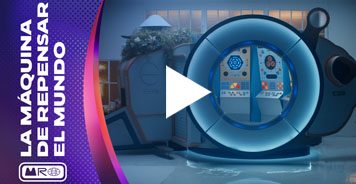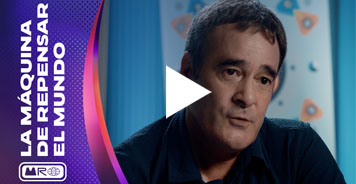Circular Economy in Spain
Circular Economy in Spain
#MundoRepensable | The Machine for Rethinking the World.
Currently, each Spaniard produces 460 kg of urban waste annually, which is six times their average weight. This startling number is a result of the long-standing linear economic paradigm, which is centred on extraction, production, consumption, and disposal. According to this paradigm, there is a significant environmental cost associated with making things, as well as at the end of their useful lives.
Therefore, it is critical to put in place a more sustainable system—the circular economy—that makes the most of available resources and provides our waste a second chance.
Contribute to making the planet more circular
At Ecoembes, we seek to educate people about the value of recycling and the circular economy. Due to this, we have started a stirring and deeply felt campaign in which we underline that materials that are wasted are actually resources that may be given new life. And that by recycling them, we contribute to the perpetual motion of the universe: A world that is more circular and sustainable.
Play our spot if you haven't already!
From the 3Rs to the 7Rs
As we have previously shown, the conventional linear approach encourages the acquisition of fresh raw materials each time a new product is manufactured, having a significant negative impact on the environment.
Reduce, Reuse, and Recycle, sometimes known as the 3Rs, help to reduce the effect while conserving resources and energy. But why not redesign items to be more sustainable from the start, or why not fix them rather than purchase new ones? These 3Rs are expanded to 7Rs by the circular economy, which adds other ideas like eco-design and repair to the chain. Do you know them?
-
Redesign: This entails creating items using eco-design principles, keeping the environment in mind. In this approach, while a product is being manufactured, sustainability is given equal weight to usefulness.
-
Reduce: We consume a lot of things quickly. Therefore, in order to protect the environment, we must likewise cut back on the things we use and the waste we produce.
-
Reuse: This strategy aims to extend the usefulness of items by reusing them or repurposing them through DIY or crafts. You may find countless suggestions for reusing any number of goods online.
-
Repair: When a product malfunctions, we frequently prefer to replace it rather than even contemplating the possibility of repair. However, fixing is typically more affordable and is always healthier for the environment, conserving resources, energy, and waste!
-
Renovate: This entails modernising all the outdated items, so they may be put back into use for the purposes for which they were intended.
-
Recover: This involves collecting previously used resources and reusing them in the manufacturing process.
-
Recycle: Reintroducing waste that has previously been used in the manufacturing process allows it to be employed as a raw material for other new goods. After attempting every other alternative, it really ought to be the final one. Because, as we all know, waste that is not generated is the best kind of waste!


